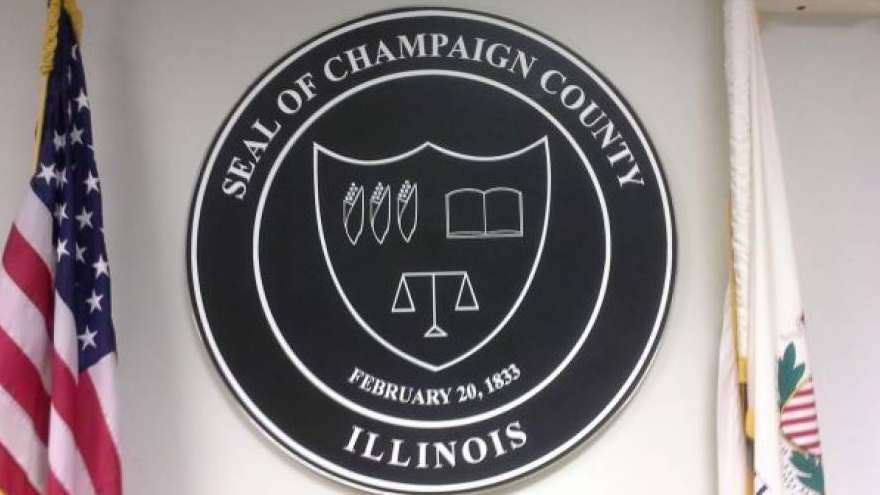On Tuesday, Oct. 13, Champaign County Board will consider forming a Racial Justice Task Force to study the racial disparities within the Champaign County criminal justice system.
The reputation of the Champaign County criminal justice system is this:
If you’re black in Champaign County the police are more likely to:
- be patrolling in your neighborhood,
- more likely to be conducting drug investigations in your neighborhood,
- more likely to stop your car,
- more likely to make up any reason to stop your car,
- more likely to interrogate you for your information,
- more likely to search you and your car,
- more likely to be rude to you,
- more likely to arrest you,
- more likely to impound your car,
- more likely to hurt you physically,
- more likely to draw weapons on you,
- and more likely to use weapons on you.
If you’re black in Champaign County, the State’s Attorney’s office is:
- more likely to overcharge you with multiple offenses,
- more likely to set a high bond,
- more likely to seek a conviction,
- more likely to seek expensive court costs and fines against you,
- more likely to insist you go to jail,
- and more likely to insist on a prison sentence.
… all of these things are more likely to occur if by chance your soul is contained in an African American body in Champaign County. In short, the reputation of the Champaign County criminal justice system is one of aggression and hostility toward African-Americans.
Is it OK for this perception to hover over this county in the twenty-first century, let alone 2015?
The Build Programs Not Jails group recently compiled some racial disparity statistics to show we have alarming data points that need further investigation:
Over 67% of those sent to the Department of Corrections in 2013, were African American. For the past eight years in a row, all four local police departments were stopping and ticketing African American drivers at a disproportionate rate. The Urbana Traffic Stop Task Force did a year-long study and found African Americans were stopped more by the Urbana Police Department, ticketed more and received higher fines.

Counts vary, but the Champaign County Jail’s population consistently runs over 50% African American and as high as 70%. When Vivelo Hoy (a paper operated by the Chicago Tribune) did a study, they found between the years 2007-2011, 41% of the arrests in Champaign were of African Americans, and 49% of the arrests in Urbana were of African Americans. 75% of the possession of marijuana charges of 30 grams or less were of African Americans. 75% of all vehicular noise violations were against African Americans. 80% of the resisting a police officer were against African Americans.
80% of the jaywalking offenses were against African Americans. Jaywalking. Think about that.
When you consider African Americans make up only 14% of Champaign County’s population, the racial disparity of some of these numbers are worse than what was discovered in Ferguson, Missouri.
Here’s another statistic found in the 2012 RFP to build a $32 million dollar jail: The state’s attorney reported her office receives 8,400 police reports per year; which corresponds to, on average, the 8000 bookings at the county jail every year. What’s interesting is that Champaign County averages less than 4000 criminal prosecutions per year. What happens to the remaining 4,400 police reports and by what criteria does the State’s Attorney decide to dismiss a case?
For the last 20 years, Champaign County has enjoyed the most new construction than any city in Illinois other than Chicago, and despite this influx of wealth and investment, Champaign County has the third highest poverty rate in a state of 102 counties.
How can this be?
Since the building of the Satellite Jail in 1996, Champaign County has doubled the number of arrests and prosecutions it handles every year, averaging about 8000 arrests and 3,850 prosecutions per year. During that same time period, the number of those living at or below the poverty line in Champaign County has doubled as well, jumping from 17,753 in 1998 to 40,848 in 2013. In a February 2010 county board meeting, it was discovered that the citizens of Champaign County owe over $16 million dollars in criminal court costs, fines and fees.
Is there any relationship between the poverty of this county and the actions of the criminal justice system?
The outcomes of the criminal justice system rest entirely on the choices police officers and prosecutors make, what is proudly described as officer and prosecutor discretion. An officer can look the other way and choose not to arrest an offender, or a prosecutor can elect not to move forward with a case.
We cannot tolerate an unequal application of the law. It is unconstitutional and plain wrong. We cannot tolerate that our police and prosecutors are perceived to be organized racists. This reputation breeds contempt and resentment towards law enforcement and jeopardizes officer safety. Generations of school children grow up believing the police and lawyers have it out for them and hostilities toward the officers can be the result.
For the benefit of all, it would be prudent for the County Board to do its due diligence to discover if, in fact, we have a problem, so we can begin to take the proactive steps necessary to heal this community and make sure our criminal justice system is actually improving public safety and executing our laws justly and fairly.
We can’t deny we are a community divided. That’s not good. It’s not good for our schools, it’s not good for our economy, and it’s not good for our quality of life in Champaign County. It’s time to start doing the right thing. The county board should install a Racial Justice Task Force to study our criminal justice system.
(Photo of Champaign County Seal by Illinois Public Media, Photo of Urbana Police car by PoliceArchives.org)








